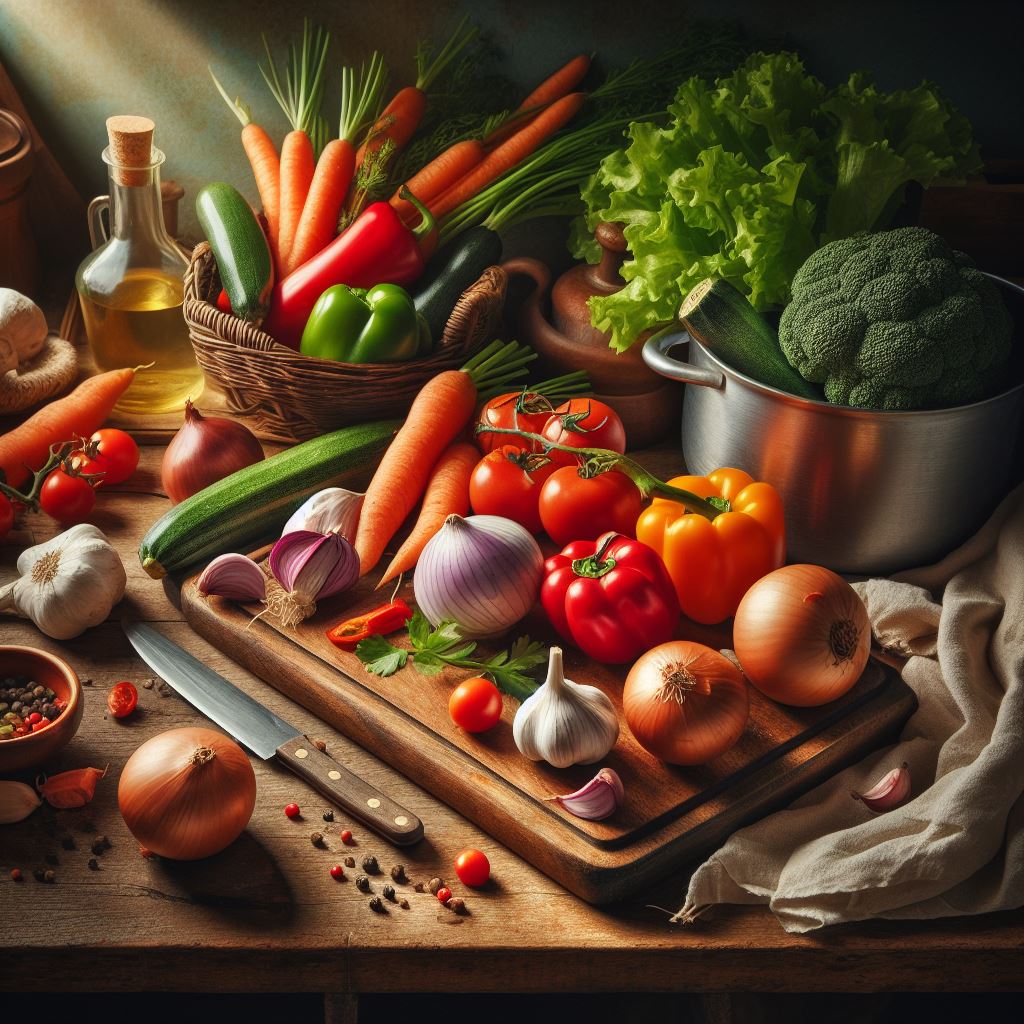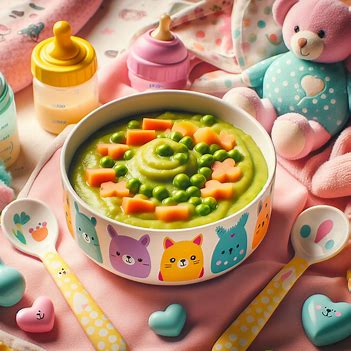
Introduction to baby feeding
As a parent, one of the most exciting milestones in your baby’s development is the introduction of solid foods. It’s an important step that can be both rewarding and challenging. In this guide, I will provide valuable advice and tips to help you navigate the world of baby feeding.
When to introduce solid foods to your baby
Knowing when to introduce solid foods to your baby is crucial for their overall growth and development. The World Health Organization recommends exclusive breastfeeding for the first six months of a baby’s life. After this period, you can begin to introduce solid foods alongside breastfeeding or formula feeding.
Signs your baby is ready for solid foods
Every baby is different, but some common signs indicate your little one is ready for solid foods. Look out for these cues to ensure a smooth transition:
- Head and neck control: Your baby should be able to hold their head steady and sit upright with minimal support.
- Increased appetite: If your baby starts showing signs of hunger more frequently and seems unsatisfied with milk alone, they may be ready for solid foods.
- Curiosity about food: Babies often show interest in what their parents are eating. If your baby is reaching for your food or opening their mouth when you eat, it may be a sign that they are ready to explore new tastes and textures.
Types of solid foods to introduce and when
When introducing solid foods to your baby, it’s important to start with simple, easily digestible options. Here are some recommendations for the first foods to offer and when to introduce them:
- Single-grain cereals: Around six months, you can introduce iron-fortified rice cereal or oatmeal. Start with a thin consistency and gradually thicken it as your baby becomes more accustomed to eating.
- Pureed fruits and vegetables: Once your baby is comfortable with cereal, you can introduce pureed fruits and vegetables. Start with mild options like mashed bananas, avocados, or cooked carrots. Gradually introduce a variety of fruits and vegetables to expose your baby to different tastes and textures.
- Proteins: After your baby has tried a variety of fruits and vegetables, you can introduce pureed or mashed proteins such as cooked chicken, beef, or legumes. Make sure the proteins are finely mashed or pureed to avoid any choking hazards.
How to prepare and store homemade baby food
Preparing homemade baby food can be a cost-effective and healthier alternative to store-bought options. Here’s a step-by-step guide to help you prepare and store homemade baby food:
- Choose fresh and organic produce: Opt for fresh fruits and vegetables that are in season. Organic options can minimize exposure to harmful pesticides.
- Wash and peel the produce: Thoroughly wash all fruits and vegetables to remove any dirt or bacteria. Peel them as necessary, especially for hard-skinned fruits like apples or pears.
- Steam, bake, or boil: Cook the fruits and vegetables until they are soft and tender. You can choose to steam, bake, or boil them based on your preference.
- Puree or mash: Once cooked, transfer the fruits and vegetables to a blender or food processor. Blend or mash until you achieve a smooth consistency. You can add a little breast milk, formula, or water to adjust the texture.
- Store in appropriate containers: Divide the pureed food into small, airtight containers or ice cube trays. Label and date them before placing them in the refrigerator or freezer. Frozen baby food can be stored for up to three months.
Baby-led weaning vs. traditional spoon-feeding
When it comes to introducing solid foods, you have two main approaches: baby-led weaning and traditional spoon-feeding. Let’s explore both methods to help you make an informed decision:
- Baby-led weaning: Baby-led weaning involves allowing your baby to self-feed from the start. You offer them soft, appropriately sized finger foods, and they explore and feed themselves. This method promotes independence and helps develop fine motor skills.
- Traditional spoon-feeding: You use a spoon to feed your baby pureed or mashed foods. This method allows you to control the portion sizes and ensure your baby gets an adequate amount of food.
Tips for introducing solid foods to your baby
Introducing solid foods to your baby can be exciting, but it can also come with its fair share of challenges. Here are some tips to help make the transition smoother:
- Start with small portions: Begin with small portions of solid foods and gradually increase the amount as your baby becomes more comfortable and accepting of new textures.
- Be patient: Babies may take some time to adjust to the taste and texture of solid foods. Offer various options and give your baby time to explore and develop their preferences.
- Make mealtime enjoyable: Create a positive and relaxed atmosphere during mealtime. Sit with your baby, make eye contact, and engage in conversation. This helps establish a healthy relationship with food.
- Offer a variety of flavours: Introduce a wide range of tastes and textures to expose your baby to different flavours. This can help prevent picky eating habits later on.
- Avoid added sugar and salt: Babies do not need added sugar or salt in their diet. Stick to natural flavours and avoid adding any sweeteners or seasonings to their food.
Common challenges and solutions in baby feeding
As you embark on your baby’s feeding journey, you may encounter some common challenges. Here are a few challenges and their possible solutions:
- Food refusal: Sometimes, babies may refuse certain foods. Don’t force them to eat it. Instead, offer the food again at a later time or try a different food with a similar taste or texture.
- Messy mealtimes: Babies are naturally curious and may enjoy exploring their food. Embrace the mess and provide a safe environment for them to experiment with their food.
- Constipation: If your baby is experiencing constipation, offer them foods high in fibre like pureed prunes, pears, or peas. Ensure they are drinking enough fluids as well.
- Allergies: Introduce one new food at a time and watch for any signs of an allergic reaction. If you notice any symptoms like rash, swelling, or difficulty breathing, consult your paediatrician immediately.
Nutritional considerations for baby feeding
Ensuring your baby receives proper nutrition is essential for their growth and development. Here are some important nutritional considerations:
- Breast milk or formula: Continue breastfeeding or formula feeding alongside solid foods to provide essential nutrients and hydration.
- Iron-rich foods: Introduce iron-rich foods like fortified cereals, leafy green vegetables, and lean meats to prevent iron deficiency.
- Vitamin-rich foods: Offer a variety of fruits and vegetables to provide essential vitamins and minerals. Aim for a rainbow of colours on your baby’s plate.
- Introduce allergenic foods: Contrary to popular belief, introducing allergenic foods early may reduce the risk of developing allergies. Consult with your paediatrician before introducing common allergens like peanuts, eggs, or shellfish.
Allergies and food sensitivities in babies
Food allergies and sensitivities can occur in babies, and it’s important to be aware of the signs and symptoms. Look out for the following:
- Skin reactions: Rashes, hives, or eczema can be signs of an allergic reaction.
- Digestive issues: Diarrhea, vomiting, or abdominal pain may indicate a food sensitivity or allergy.
- Respiratory problems: Wheezing, coughing, or difficulty breathing can be a severe allergic reaction that requires immediate medical attention.
If you suspect your baby has a food allergy or sensitivity, consult your paediatrician for further evaluation and guidance.
Baby feeding equipment and products
Having the right equipment and products can make baby feeding easier and more convenient. Here are some essentials:
- High chair or booster seat: Invest in a sturdy, easy-to-clean high chair or booster seat that provides proper support for your baby during mealtimes.
- Baby feeding spoons: Look for soft-tipped spoons that are gentle on your baby’s gums and small enough for their mouth.
- Sippy cups: Once your baby is ready to transition from a bottle, sippy cups can help them learn to drink independently.
- Food storage containers: Choose airtight containers or ice cube trays for storing homemade baby food. This allows you to portion and freeze meals for future use.
Frequently asked questions about baby feeding
- When should I introduce water to my baby? You can offer small sips of water from a cup once your baby starts solid foods. Avoid giving water in a bottle as it may interfere with proper milk intake.
- How do I know if my baby is getting enough to eat? Look for consistent weight gain, wet diapers, and contentment after feedings. Consult your paediatrician if you have concerns about your baby’s intake.
- Can I introduce cow’s milk for one year? Cow’s milk should be avoided as a primary drink until your baby is at least one year old. Breast milk or formula should be their main source of nutrition.
- What should I do if my baby gags on solid foods? Gagging is a normal part of learning to eat solid foods. Stay calm and let your baby work through it. Avoid putting your fingers in their mouth as it may push the food further back.
Conclusion
Introducing solid foods to your baby is an exciting and important milestone. By following the advice and tips in this guide, you can make the experience enjoyable and nourishing for both you and your little one. Remember to consult with your pediatrician for personalized guidance and always trust your instincts as a parent. Happy feeding!
CTA: If you found this guide helpful, check out our other articles on parenting and baby care for more valuable tips and advice.


















